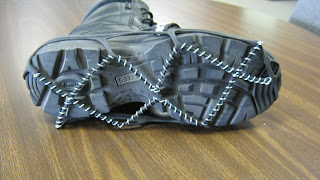“How to Beat the Cold While Working Outdoors
in Minnesota”
Staying warm
and safe while on the job can become a challenge at times. This is especially true when a great deal of
the public works job tasks are done outdoors. When temperatures drop the risk
of a cold-related illness increases.
To prevent
cold weather exposures, you should consider the Top 10 Cold Weather Precautions:
1.
Have
sufficient clothing, including face/head protection, gloves and footwear. Loose multi-layered clothing provides the
best protection, because air trapped between layers of clothing provides an
additional thermal insulation.
2.
Drink
plenty of fluids, preferably warm sweet beverages. Cold weather suppresses thirst, and
dehydration can occur without proper fluid intake.
3.
Increase
caloric intake. Working in heavy
protective clothing expends more heat, so 10-15% more calories are required.
4.
Take
periodic breaks as wind velocity increases or the temperature drops.
5.
Avoid
alcohol, nicotine, caffeine and medications that inhibit the body’s response to
cold or impair judgment.
6.
Avoid
the cold if you are becoming exhausted or immobilized, conditions that can
accelerate the effects of cold weather.
7.
Shield
work areas from drafty or windy conditions.
Seek a heated shelter if you have prolonged exposure to a wind chill of
20 degrees or less.
8.
Work
during the warmest hours of the day and minimize activities that decrease
circulation.
9.
Learn
the symptoms of cold-related stresses:
heavy shivering, uncomfortable coldness, severe fatigue, drowsiness and
euphoria.
10. Work in pairs so partners can monitor
one another and obtain help quickly in an emergency.
The best protection against
cold-related health risks is to be aware
and prepared. Are your employees
trained in this area? If not, we hope that
you consider doing so.
Most often,
cold-related illnesses are preventable conditions, but if left untreated, could
have significant consequences, including death.
Major disorders related to cold exposure include:
Hypothermia: This occurs when
the body temperature drops due to excessive loss of body heat. It can be fatal unless the person is moved to
a warm shelter and receives timely medical attention. Many times, a person who is suffering from
hypothermia is unable to recognize their own signs and symptoms of hypothermia,
and their treatment and survival is dependent on a co-worker’s ability to help
them. Using a “buddy system” is a great
way to help detect signs of cold injury in co-workers.
Frostbite: This condition
occurs when body parts are frozen due to exposure to severe cold or by contact
with extremely cold objects (such as metal).
It most often afftcts the nose, ears, cheeks, chin, fingers, and toes
due to their poor blood supply.
Frostbite can cause permanent damage, and the most severe cases can
result in amputation.
By Jackie Torgerson








